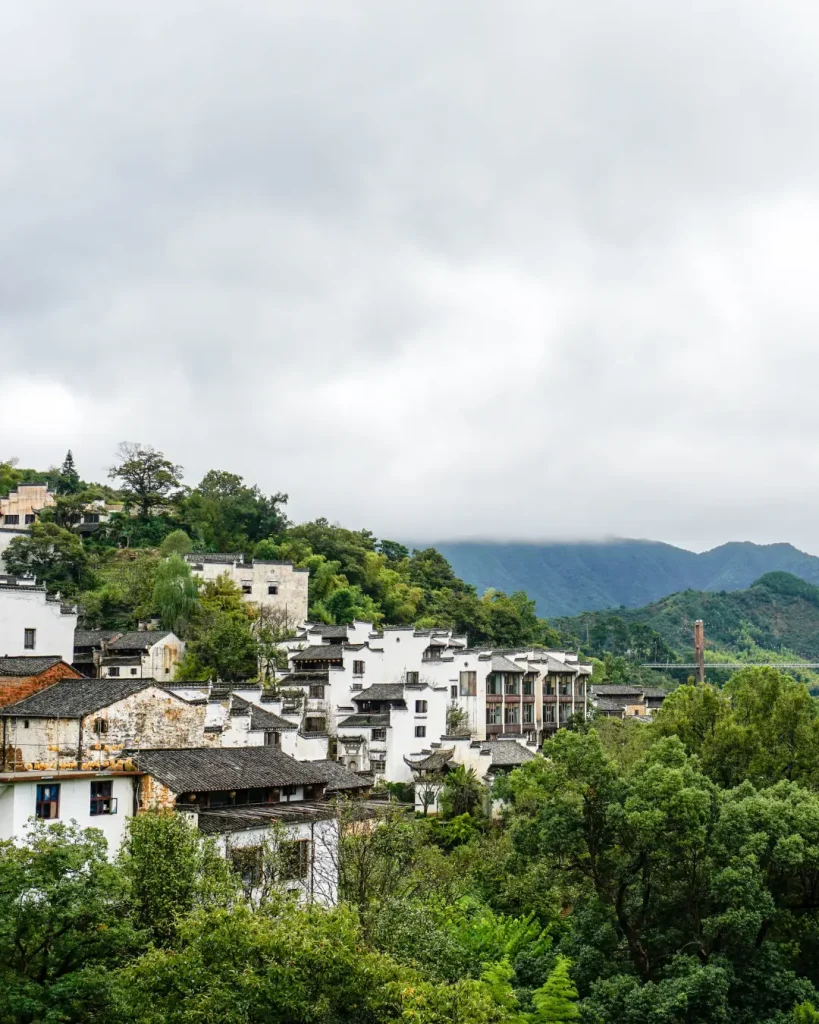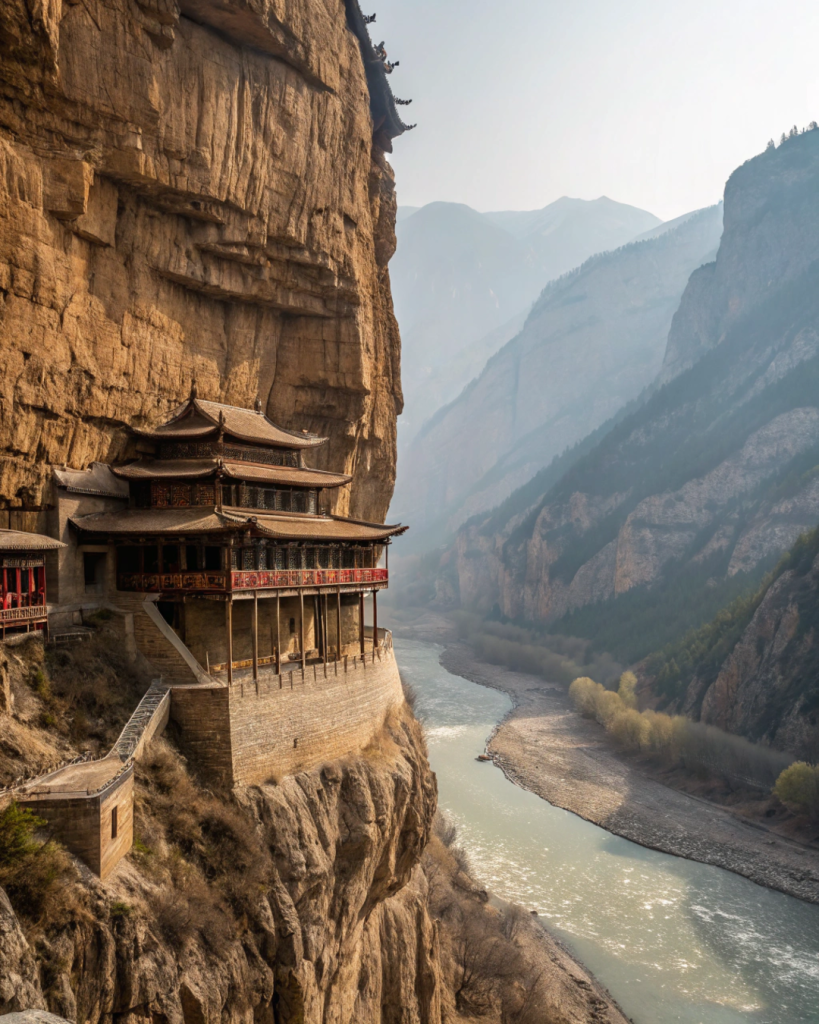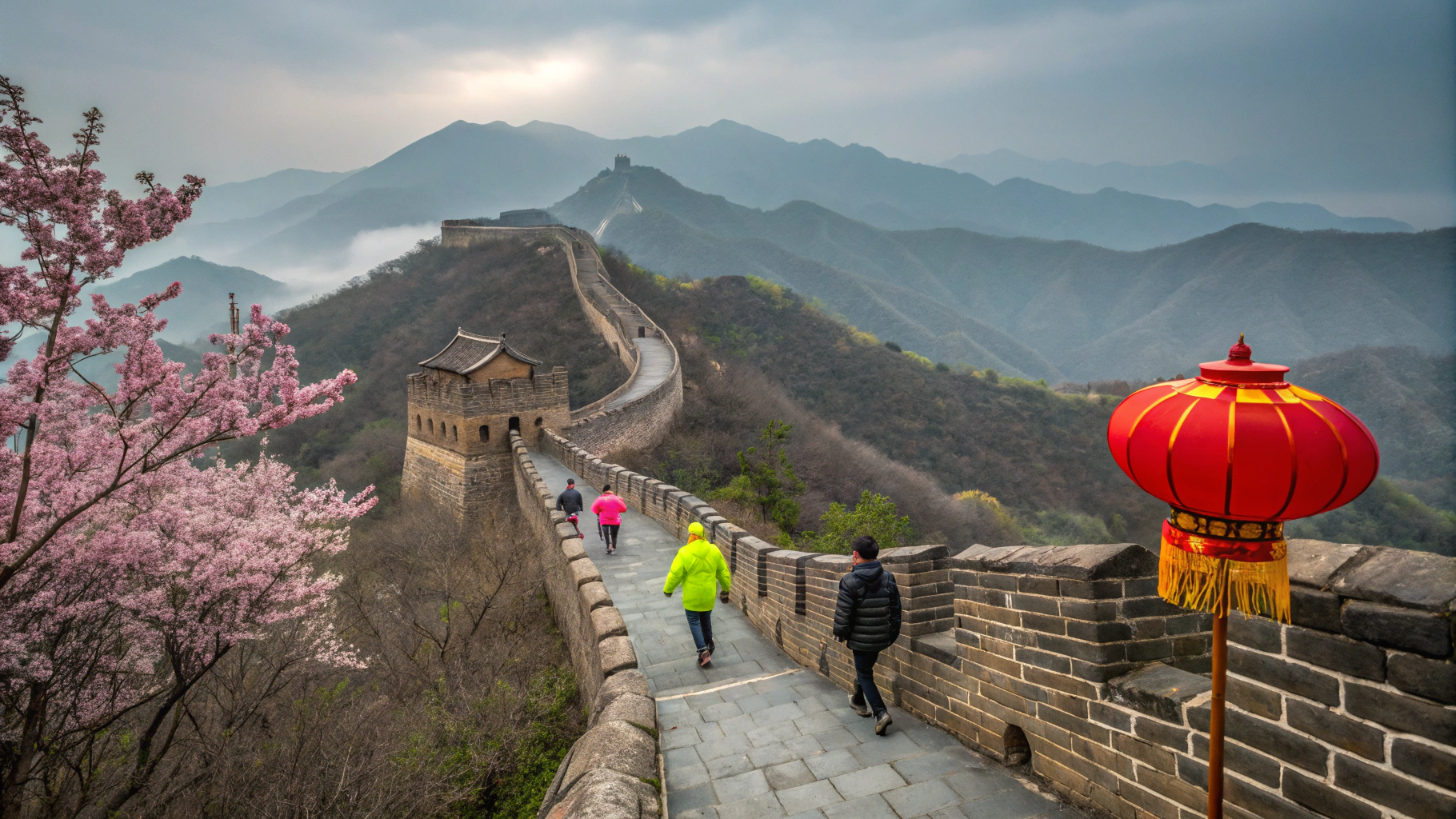The first time I stood atop the Great Wall, the sheer scale of it took my breath away. Snaking across rugged mountains as far as the eye could see, it was a testament to human ambition and ingenuity.
But China is so much more than its iconic landmarks. It’s a land of contrasts—ancient temples nestled beside futuristic skyscrapers, misty rice terraces giving way to neon-lit megacities, and flavors that range from fiery Sichuan hotpot to delicate Cantonese dim sum.
Over the years, I’ve explored China from the bustling streets of Beijing to the serene landscapes of Guilin, and I’m here to share everything you need to know to plan your own unforgettable journey.
When to Visit: Timing Your Trip to Perfection
China’s vast size means its climate varies dramatically by region. Here’s when to go for the best experience:
Best Times by Region
- Beijing & the Great Wall (North China): Spring (April–May) and autumn (September–October) offer mild weather and fewer crowds. Avoid winter’s biting cold and summer’s sweltering heat.
- Shanghai & Hangzhou (East China): Spring is ideal for cherry blossoms, while autumn brings golden ginkgo trees.
- Guilin & Yangshuo (South China): Visit in spring or autumn for clear skies and lush landscapes. Summer is hot and humid, but perfect for river cruises.
- Tibet & Western China: May–October is the best window, as winter brings heavy snow and road closures.
Festivals Worth Planning Around
- Chinese New Year (January/February): A spectacle of fireworks, dragon dances, and family feasts. Book transport early—it’s the world’s largest human migration.
- Mid-Autumn Festival (September/October): Mooncakes and lantern displays light up cities like Shanghai and Hong Kong.
- Dragon Boat Festival (June): Watch thrilling races in Hangzhou or Xiamen.
Pro Tip: Use AccuWeather to check regional forecasts before finalizing your itinerary.
Getting There: Navigating China’s Transport Network

China’s transport system is vast and efficient, but it can be overwhelming for first-timers. Here’s how to get around:
Flights
- Major Airports: Beijing (PEK), Shanghai (PVG), and Guangzhou (CAN) are primary hubs.
- Budget Airlines: Spring Airlines and Lucky Air offer cheap domestic flights.
Trains
- High-Speed Rail: Connects major cities at speeds up to 350 km/h. A Beijing–Shanghai ticket costs ¥553 ($80) for a 4.5-hour journey.
- Overnight Trains: Save on accommodation with sleeper berths (¥300–600/$45–90).
Local Transport
- Subways: Beijing, Shanghai, and Guangzhou have extensive networks. Buy a rechargeable transport card for convenience.
- Taxis: Use Didi Chuxing (China’s Uber) to hail rides. Have your destination written in Chinese for non-English-speaking drivers.
Cultural Note: Always carry your passport—it’s required for train tickets and hotel check-ins.
Costs: Budgeting for Your Chinese Adventure
China is surprisingly affordable, but costs vary by region. Here’s a breakdown:
Budget Travel ($30–50/day)
- Accommodation: Hostels (¥80–150/12–22)orbudgethotels(¥200–300/12–22)orbudgethotels(¥200–300/30–45).
- Food: Street food like jianbing (savory crepes) for ¥10–20 ($1.50–3).
- Transport: Subway fares start at ¥3 ($0.50).
Mid-Range ($70–150/day)
- Accommodation: Boutique hotels (¥400–600/$60–90) or Airbnb apartments.
- Food: Local restaurants (¥50–100/$7–15 per meal).
- Activities: Entrance fees to major sites like the Forbidden City (¥60/$9).
Luxury ($200+/day)
- Accommodation: 5-star hotels like The Peninsula Shanghai (¥1,500+/night/$225+).
- Food: Fine dining at places like Ultraviolet in Shanghai (¥4,000+/person/$600+).
- Tours: Private guides for the Great Wall or Terracotta Warriors (¥1,000+/day/$150+).
My Advice: Use Alipay or WeChat Pay for cashless transactions—even street vendors accept them.
Where to Stay: From Hutong Stays to Luxury Retreats

China offers accommodations for every taste and budget. Here are my top picks:
Beijing
- Luxury: The Opposite House (¥1,800+/night/$270+), a design hotel in Sanlitun.
- Mid-Range: Nostalgia Hotel (¥600/night/$90), a hutong courtyard stay.
- Budget: Peking International Youth Hostel (¥150/night/$22), near the Forbidden City.
Shanghai
- Luxury: Fairmont Peace Hotel (¥1,500+/night/$225+), an Art Deco icon on the Bund.
- Mid-Range: The Yangtze Boutique (¥700/night/$105), blending old-world charm with modern amenities.
- Budget: Mingtown Etour Youth Hostel (¥200/night/$30), in the French Concession.
Guilin
- Luxury: Banyan Tree Yangshuo (¥2,000+/night/$300+), with karst mountain views.
- Mid-Range: Yangshuo Moondance Hotel (¥500/night/$75), a cozy riverside retreat.
- Budget: Guilin Central Hostel (¥100/night/$15), near Elephant Trunk Hill.
Booking Tip: Use Trip.com for discounts on Chinese hotels.
Must-See Places: China’s Iconic Landmarks
China’s landmarks are as diverse as its landscapes. Don’t miss these:
Historical Sites
- The Great Wall: Visit Mutianyu for fewer crowds or Jinshanling for hiking.
- The Forbidden City: Beijing’s imperial palace complex. Book tickets online to skip lines.
- Terracotta Warriors: Xi’an’s army of clay soldiers is a UNESCO World Heritage Site.
Natural Wonders
- Zhangjiajie National Forest: Inspiration for Avatar’s floating mountains.
- Li River Cruise: Glide past Guilin’s karst peaks on a bamboo raft.
- Jiuzhaigou Valley: Turquoise lakes and waterfalls in Sichuan.
Modern Marvels
- Shanghai’s Bund: Skyscrapers and colonial architecture along the Huangpu River.
- Pudong: Home to the Shanghai Tower, China’s tallest building.
Food Recommendations: A Culinary Odyssey
Chinese cuisine is as diverse as its regions. Here’s what to try:
Street Food
- Beijing: Jianbing (¥10/1.50)andlambskewers(¥5/1.50)andlambskewers(¥5/0.75).
- Chengdu: Spicy chuan’r (skewers) for ¥20–30 ($3–5).
Local Dishes
- Shanghai: Xiaolongbao (soup dumplings) at Din Tai Fung (¥50/$7.50).
- Guangzhou: Dim sum at Tim Ho Wan (¥100/$15).
Fine Dining
- Beijing: Duck de Chine (¥300+/person/$45+) for Peking duck.
- Shanghai: Ultraviolet (¥4,000+/person/$600+), a multi-sensory dining experience.
Etiquette Tip: Never stick chopsticks upright in rice—it resembles funeral incense.
Local Tips: Navigating China Like a Pro
- Learn Basic Phrases: “Nǐ hǎo” (Hello) and “Xièxiè” (Thank you) go a long way.
- Carry Toilet Paper: Many public restrooms don’t provide it.
- Respect Local Customs: Avoid discussing sensitive topics like politics or Tibet.
Hidden Gems: Beyond the Tourist Trail
- Fenghuang Ancient Town: A riverside village with traditional stilt houses.
- Kanas Lake: Xinjiang’s “Oriental Switzerland” with pristine alpine scenery.
- Pingyao: A walled city frozen in time.
Nearby Destinations
- Hong Kong: A 2-hour flight from Shanghai—shop in Causeway Bay and hike Victoria Peak.
- Macau: A 1-hour ferry from Hong Kong—explore Portuguese architecture and casinos.

